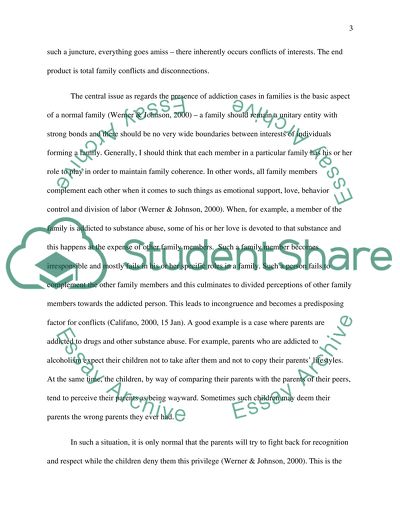Cite this document
(Addressing Conflicts Resulting from Addiction in a Family Essay Example | Topics and Well Written Essays - 2250 words, n.d.)
Addressing Conflicts Resulting from Addiction in a Family Essay Example | Topics and Well Written Essays - 2250 words. https://studentshare.org/psychology/1624109-conflicts-in-family-course
Addressing Conflicts Resulting from Addiction in a Family Essay Example | Topics and Well Written Essays - 2250 words. https://studentshare.org/psychology/1624109-conflicts-in-family-course
(Addressing Conflicts Resulting from Addiction in a Family Essay Example | Topics and Well Written Essays - 2250 Words)
Addressing Conflicts Resulting from Addiction in a Family Essay Example | Topics and Well Written Essays - 2250 Words. https://studentshare.org/psychology/1624109-conflicts-in-family-course.
Addressing Conflicts Resulting from Addiction in a Family Essay Example | Topics and Well Written Essays - 2250 Words. https://studentshare.org/psychology/1624109-conflicts-in-family-course.
“Addressing Conflicts Resulting from Addiction in a Family Essay Example | Topics and Well Written Essays - 2250 Words”. https://studentshare.org/psychology/1624109-conflicts-in-family-course.


